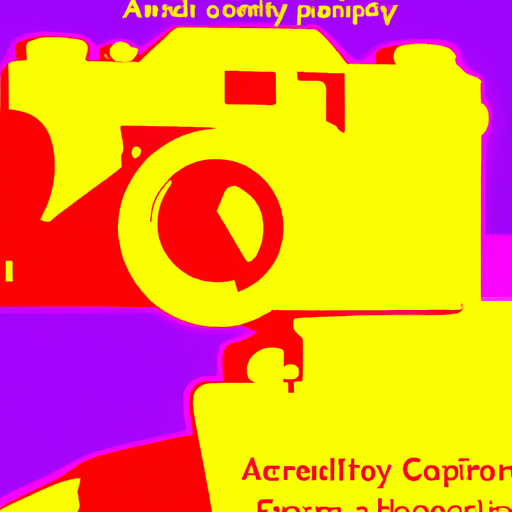
-
Table of Contents
- Designing for Accessibility: Inclusive Graphic Design
- The Importance of Inclusive Design
- Understanding Different Disabilities
- Visual Impairments
- Hearing Impairments
- Mobility Impairments
- Cognitive Disabilities
- Best Practices for Inclusive Graphic Design
- 1. Use Clear and Readable Typography
- 2. Provide Alternative Text for Images
- 3. Create Accessible Color Schemes
- 4. Design Intuitive and Consistent Navigation
- 5. Provide Captions and Transcripts for Multimedia
- Case Studies: Successful Inclusive Graphic Design
- 1. Apple
- 2. OXO Good Grips
- The Benefits of Inclusive Design
- 1. Expanded Audience Reach
- 2. Improved User Experience
- 3. Compliance with Legal Requirements
Designing for Accessibility: Inclusive Graphic Design

Accessibility is a fundamental principle of design that ensures equal access and usability for all individuals, regardless of their abilities or disabilities. In recent years, there has been a growing recognition of the importance of inclusive design, particularly in the field of graphic design. In this article, we will explore the concept of designing for accessibility in graphic design and discuss the key considerations, best practices, and benefits of creating inclusive designs.
The Importance of Inclusive Design
Designing for accessibility is not only a moral imperative but also a legal requirement in many countries. The United Nations Convention on the Rights of Persons with Disabilities (UNCRPD) emphasizes the right of individuals with disabilities to participate fully and equally in society, including access to information and communication. Inclusive design ensures that people with disabilities can access and understand information, engage with products and services, and participate in various activities.
Moreover, designing for accessibility benefits not only individuals with disabilities but also a broader audience. For instance, captions and transcripts for videos not only assist individuals with hearing impairments but also benefit those in noisy environments or non-native speakers. Inclusive design has the potential to enhance the user experience for everyone, regardless of their abilities.
Understanding Different Disabilities
Before delving into the specifics of designing for accessibility, it is crucial to have a basic understanding of different disabilities and their implications for design. Here are some common disabilities and their considerations:
Visual Impairments
Visual impairments can range from partial sight to complete blindness. When designing for individuals with visual impairments, it is essential to consider the following:
- Use sufficient color contrast to ensure readability.
- Provide alternative text descriptions for images.
- Ensure proper heading structure for screen readers.
- Avoid using text embedded within images.
Hearing Impairments
Hearing impairments can vary from mild to profound, and individuals may rely on sign language or assistive technologies such as hearing aids or cochlear implants. When designing for individuals with hearing impairments, consider the following:
- Provide captions or transcripts for audio and video content.
- Ensure that important information is not conveyed solely through audio.
- Use visual cues to supplement auditory information.
Mobility Impairments
Mobility impairments can affect a person’s ability to use a mouse or keyboard effectively. When designing for individuals with mobility impairments, consider the following:
- Ensure that all interactive elements are accessible via keyboard.
- Provide sufficient space between interactive elements to prevent accidental clicks.
- Consider the use of alternative input methods, such as voice commands.
Cognitive Disabilities
Cognitive disabilities can affect a person’s ability to process and understand information. When designing for individuals with cognitive disabilities, consider the following:
- Use clear and concise language.
- Avoid using complex or ambiguous instructions.
- Provide visual aids or step-by-step guidance when necessary.
Best Practices for Inclusive Graphic Design
Now that we have a basic understanding of different disabilities and their implications, let’s explore some best practices for designing inclusively:
1. Use Clear and Readable Typography
Typography plays a crucial role in ensuring readability for individuals with visual impairments. Use fonts that are legible and provide sufficient contrast between the text and background. Avoid using decorative fonts or low contrast combinations that can make reading difficult.
2. Provide Alternative Text for Images
Alternative text, also known as alt text, is a brief description of an image that is read aloud by screen readers. It is essential to provide accurate and descriptive alt text for all images to ensure that individuals with visual impairments can understand the content.
3. Create Accessible Color Schemes
Color plays a significant role in design, but it is crucial to ensure that color is not the sole means of conveying information. Use color combinations that provide sufficient contrast to ensure readability for individuals with visual impairments. Additionally, consider using patterns or textures to supplement color information.
4. Design Intuitive and Consistent Navigation
Navigation is a critical aspect of any design, and it is essential to make it intuitive and consistent. Ensure that interactive elements, such as buttons and links, are easily identifiable and accessible via keyboard. Consistency in navigation helps individuals with cognitive disabilities understand and navigate the interface more effectively.
5. Provide Captions and Transcripts for Multimedia
For individuals with hearing impairments, providing captions or transcripts for audio and video content is essential. Captions not only assist individuals with hearing impairments but also benefit others in noisy environments or non-native speakers. Additionally, providing transcripts allows individuals to access the content in alternative formats.
Case Studies: Successful Inclusive Graphic Design
Let’s explore some real-world examples of successful inclusive graphic design:
1. Apple
Apple is known for its commitment to accessibility across its products and services. The company’s VoiceOver feature, which provides spoken descriptions of on-screen elements, has revolutionized the user experience for individuals with visual impairments. Apple also ensures that its website and marketing materials are designed with accessibility in mind, making them usable for a wide range of individuals.
2. OXO Good Grips
OXO Good Grips, a kitchen tools manufacturer, is renowned for its inclusive design approach. The company’s products feature ergonomic designs that are easy to grip and use, making them accessible for individuals with mobility impairments. OXO Good Grips demonstrates that inclusive design can be seamlessly integrated into everyday products without compromising aesthetics or functionality.
The Benefits of Inclusive Design
Designing for accessibility and inclusivity offers numerous benefits:
1. Expanded Audience Reach
By designing inclusively, you can reach a broader audience that includes individuals with disabilities. This not only increases your potential customer base but also demonstrates your commitment to inclusivity, which can enhance your brand reputation.
2. Improved User Experience
Inclusive design improves the user experience for everyone, not just individuals with disabilities. By considering diverse needs and preferences, you can create designs that are intuitive, easy to use, and enjoyable for a wide range of users.
3. Compliance with Legal Requirements
Designing for accessibility ensures compliance with legal requirements in many countries. By adhering to accessibility standards
